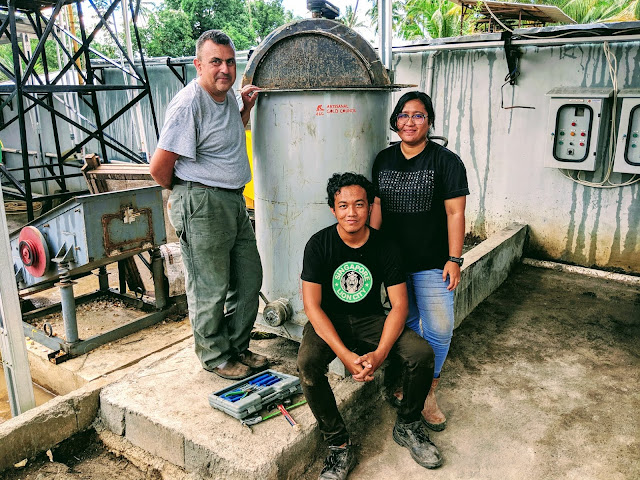Professionalization of the Artisanal Gold Mining Sector
When asked what the Artisanal Gold Council’s mission is and about my own vision for the improvement of the artisanal gold mining sector, I explain that it is mainly two simple things. First, it is about the improvement of the artisanal gold mining sector writ large so that it can better perform its role in delivering development to the rural poor, essentially helping the sector to deliver the UN’s sustainable development goals (SDGs). And secondly, that the approach we use to do this, is professionalization, that we aim to professionalize the artisanal gold mining sector. In fact, professionalization of the artisanal and small-scale gold mining sector (ASGM) is largely what the Artisanal Gold Council does. To draw attention to this approach, I have been using the tag lines: #ProfessionalizeASGM #ProfessionalizeArtisanalMining #ProfessionalizeGold
What does this really mean, to professionalize the artisanal gold mining sector, and why do it?
To begin with, there are many different possible characterizations of the ASGM sector, from primitive to communal to sophisticated, from alluvial to colluvial to hard rock veins, from illegal to informal to organised, from survival to upwardly mobilizing to economically foundational, from hobby to part time to full time career, and from individual to small groups to small business enterprises. There are numerous cases where one category transitions into another with the ultimate destination typically being a semi-mechanised small mining operation – a transition towards professionalism.
In terms of the gold that the sector produces, there can be tiny groups, even individuals, eking out a living with wooden pans in creeks whose gold is invisible to the downstream market, through to well organised, 200 tonne per day, high recovery lixiviation systems that can perform according to “code” and produce perfectly visible and traceable “responsible artisanal gold”. There can be rain-forest destroying hydraulic cannons operating illegally in protected areas; there is highly polluting mercury amalgamation; there wild and toxic “cowboy cyanide” operations contaminating groundwater; and sometimes, but far too rarely, there are professional and well run, highly efficient and low footprint systems that operate to international standards. In short, there are a huge variety of operations and standards of practice operating under the banner of ASGM but only a few of them are professionally run allowing them to be considered sources of responsible gold.
So back to professionalization. What do I really mean by professionalizing the sector? I mean making it into a sector from which high standards of behaviour are expected and one that employs highly qualified professionals. Engineers, Lawyers, Accountants, Nurses, Geologists, Mechanics, Economists, Business Administrators, Doctors, Nurses, Planners, Bureaucrats… The presence of these professionals will help the ASGM sector become a viable part of the gold mining industry that behaves professionally. I envision this happening neither solely from the bottom up nor from the top down, but from both directions. It requires pulling highly qualified people into the sector to be employed by it full time where they can develop meaningful careers and where they can act as a quality assurance system so that the world can interact with the artisanal mining sector directly through normal channels. No special conditions required. And with this cadre of professionals, pulling artisanal miners up into a professionally run and durable system that creates wealth and opportunities is possible.
A primary focus of improvement efforts to date has been “formalisation”. It is important but it is not enough. For many, formalisation boils down to a set of rules, regulations and permits. These alone can’t transform the sector into a responsible one. It needs the human resources and business infrastructure that will allow it to interact with the formal economy easily. That means highly qualified people – HQP
HQP are also the key to getting desperately needed capital to flow into the sector. An operation with a professional management team – say a CEO, CFO, and COO and their staff and perhaps even a Board of Directors - can bring confidence to investors and get capital to flow into their ASGM businesses. The structure and talent pool that exists in the junior mining sector (for example that which populates the 1200 junior mining companies listed on the TSXV) are more or less close to what is needed. Without these professionals, capitalising the sector will be difficult or just may not happen. It simply comes down to who would you trust your money with?
So what is the future of this sector? Can it fit into a normal part of the gold sector or will it always be a special case? What parts might be improved and made into a sustainable development success story? I think professionalizing the sector is key because ultimately what the world needs is a responsible gold mining sector. Not a responsible artisanal mining sector and a responsible industrial mining sector but just one sector with operations that span a spectrum of sizes and scopes. Otherwise it is going to be different strokes for different folks forever and that is unlikely to lead to the improvement of the ASGM sector at a rate or at a scope that is sufficient for its burgeoning size and population. This vision requires that the artisanal mining sector professionalizes.
How much of the sector’s 10 million people and 82 countries can be professionalized? Perhaps by closing of the irresponsible and growing of the responsible there is a way to not leave anybody behind? That is a good goal to aim for, but regardless, ASGM is gold mining and mining responsibly is not a simple matter but rather one that requires high levels of knowledge and experience. The sector needs to be professionalized. #ProfessionalizeASGM #ProfessionalizeArtisanalMining #ProfessionalizeGold



Comments
Post a Comment
The Artisanal Gold Council is a registered non-profit organization that improves the environmental and economic sustainability of artisanal and small scale gold mining communities.